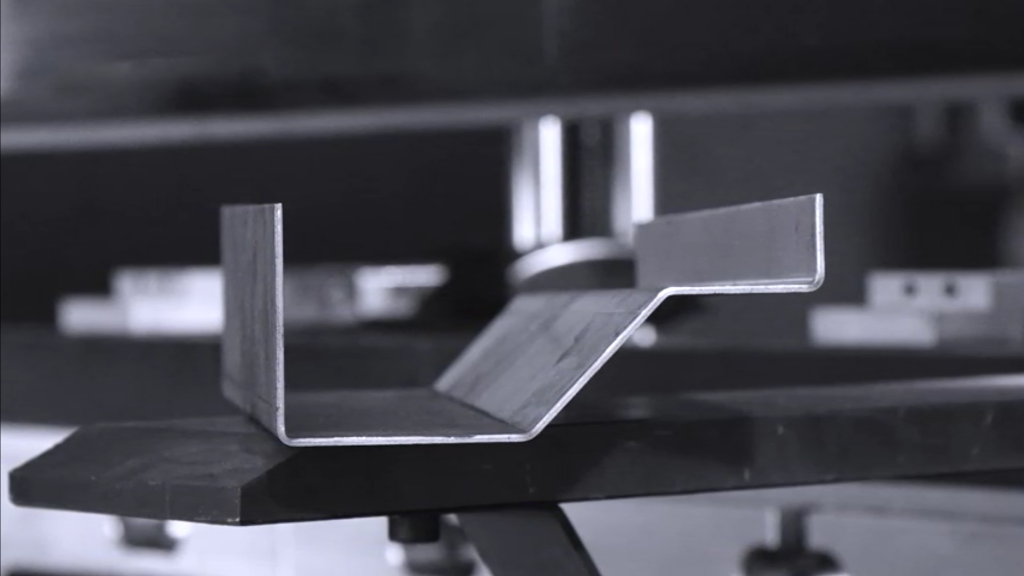Позвоните нам прямо сейчас!+86 18055583040|admin@zymtcnc.com

Позвоните нам прямо сейчас!+86 18055583040|admin@zymtcnc.com

In sheet metal processing, bending process is a common operation method and is widely used in the forming of metal sheets. In order to ensure the processing quality and accuracy, it is very important to choose the appropriate bending machine pressure. The pressure of the bending machine directly affects the forming ability, bending accuracy and processing efficiency of the material. So, how to determine the pressure of the bending machine according to the processing requirements? This article will introduce you to the relevant calculation methods and precautions in detail.
The determination of the bending machine pressure is closely related to the following factors:
1. Material type and strength: Different materials have different yield strengths and hardnesses. Soft materials require less pressure, while hard materials require greater pressure.
2. Material thickness: Thicker materials usually require more pressure to complete the bending.
3. Bending angle and bending radius: The larger the bending angle or the smaller the bending radius, the greater the pressure required.
4. Bending width: Wider sheets require greater pressure to ensure uniform bending of the sheet.
Generally, the pressure calculation of the bending machine can be estimated using an empirical formula:

Where:
·P is the pressure (tons) required by the bending machine.
·K is the strength coefficient of the material (depending on the yield strength of the material, usually 0.8 to 1.0).
·W is the width of the material (unit: mm).
·T is the thickness of the material (unit: mm).
·L is the length of the bend (unit: mm).
For example, for a 6mm thick and 1000mm long stainless steel plate, the strength coefficient K is 0.85, and the required pressure is calculated according to the formula:

1. Pressure and tonnage: When selecting a bending machine, ensure that its maximum pressure (tonnage) is greater than the calculated required pressure to avoid damage to the machine due to overload. In general, it is recommended to select a bending machine with a pressure 20-30% higher than the required pressure to ensure stable operation and long life of the equipment.
2. Structural design of the bending machine: In addition to pressure, the structural design of the bending machine must also meet processing requirements. For example, choosing the appropriate workbench length, upper and lower die configuration, etc., will affect the bending effect and efficiency.
3. Material properties: Some special materials (such as aluminum alloys, copper materials, etc.) may require additional considerations. For example, these materials may be more prone to deformation or produce greater rebound during the bending process, so more precise pressure control is required.

1. Inadequate bending: If the pressure of the bending machine is insufficient, the sheet may not be fully bent to the specified angle, or defects may increase during the bending process. This can be solved by increasing the pressure or adjusting the working parameters of the bending machine.
2. Excessive indentation: If the pressure of the bending machine is too high, it may cause indentation, cracking and other problems on the surface of the sheet. At this time, the pressure can be appropriately reduced or the mold gap can be adjusted to avoid damage to the sheet.
Determining the pressure of the bending machine is not just a simple calculation problem, but also requires comprehensive consideration of multiple factors such as actual processing requirements, material properties and equipment capabilities. Through accurate pressure calculation and reasonable equipment selection, the processing quality and production efficiency can be effectively improved, the wear of the equipment can be reduced, and long-term stable operation can be ensured.
I hope that through the introduction of this article, it can help you better understand how to choose the appropriate bending machine pressure according to the processing requirements. In actual operation, it is also necessary to make appropriate adjustments based on the specific working environment and processing requirements.